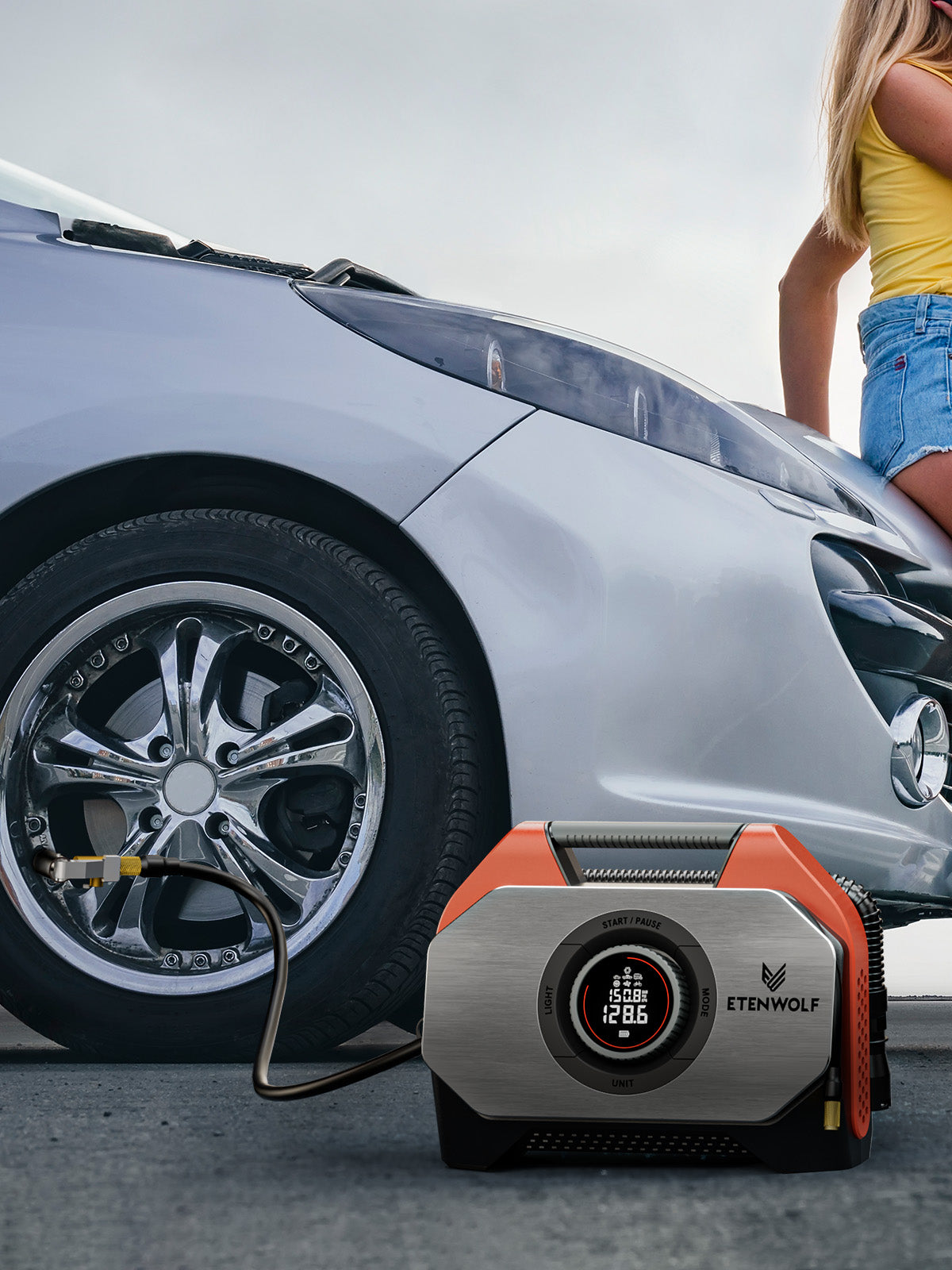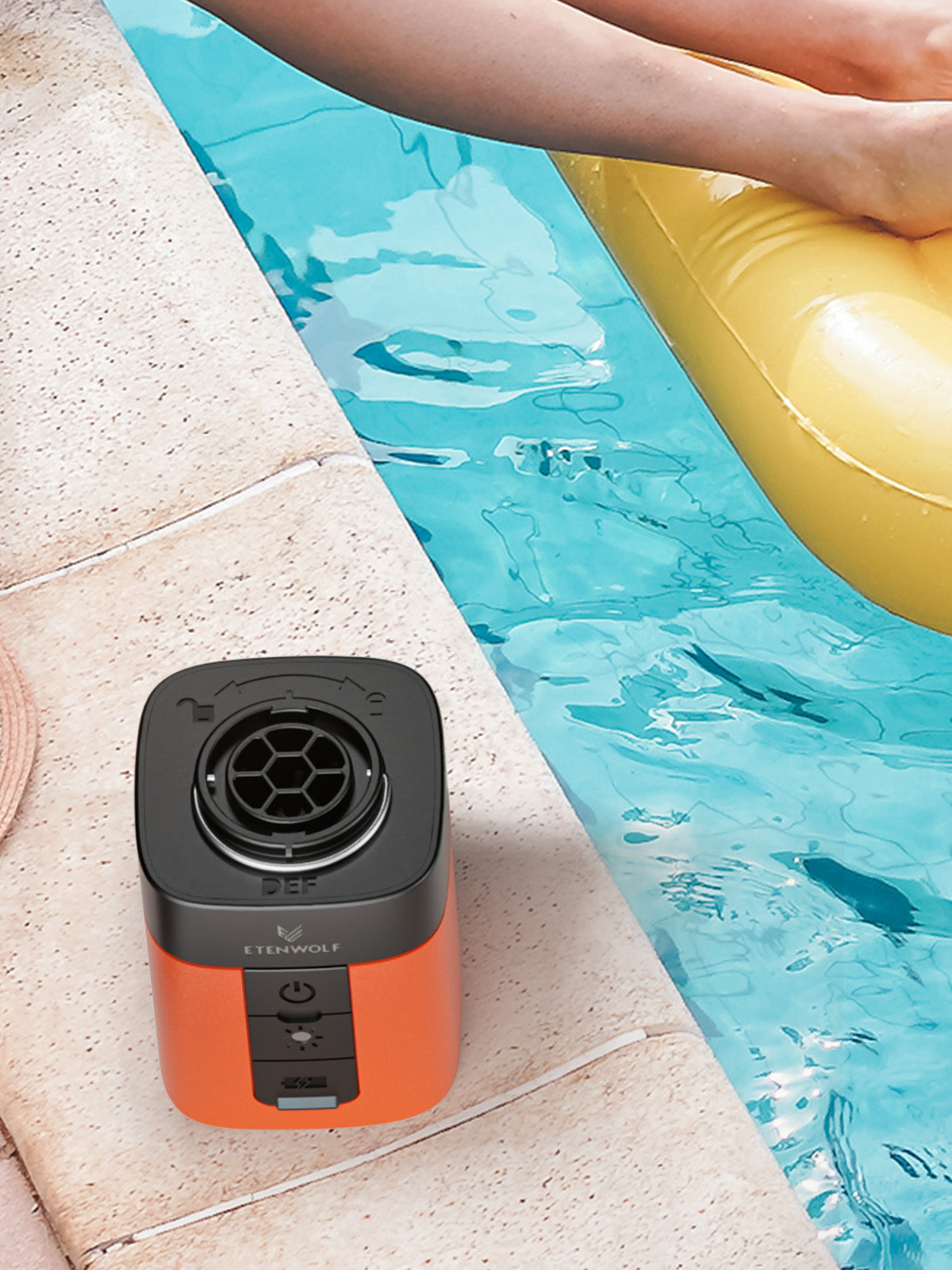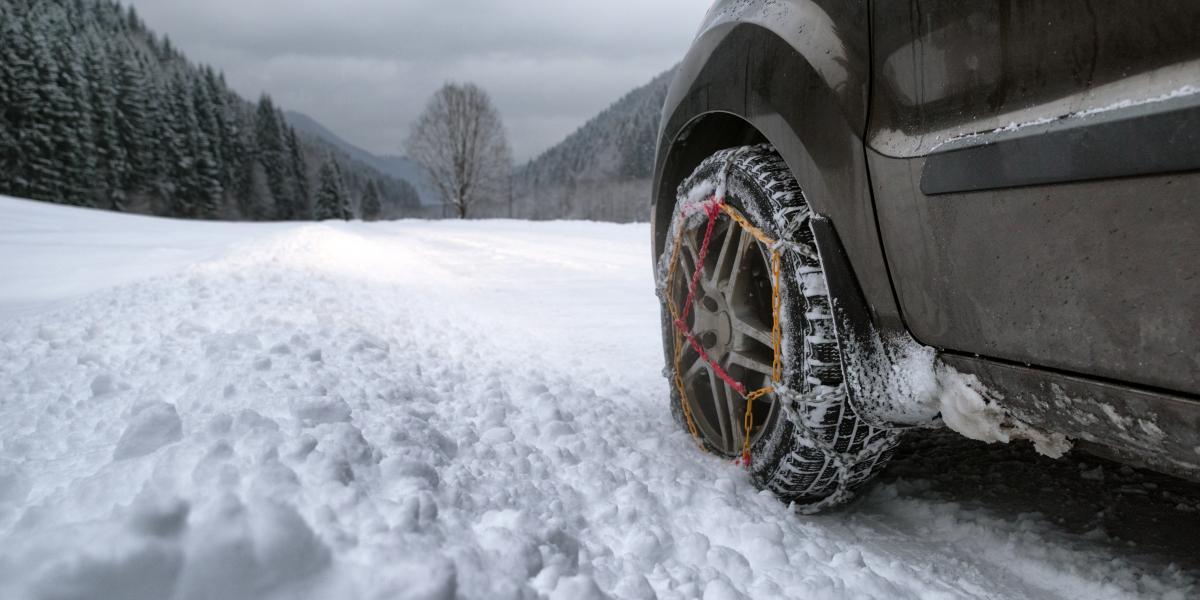The United States faces unpredictable winter driving conditions. The best all-season tires fail to provide sufficient traction when drivers encounter unexpected icy sections and deep mountain snow. The solution for winter driving safety lies in tire chains, which people also refer to as snow chains. The winter traction device known as tire chains has operated for over 100 years and continues to serve as a dependable safety solution for driving through snowy and icy conditions.
Many drivers lack complete knowledge about tire chains, including their origins and legal status across different areas, and how tire pressure impacts their operation. The installation of chains requires correct tire pressure because incorrect pressure levels before chain installation create safety hazards and decrease traction while also causing tire damage.
The following article provides complete information about tire chains before concluding with an essential warning about tire pressure management.
The ETENWOLF S7 serves as your winter hero because it provides the necessary power to inflate tires correctly before installing chains on your vehicle.
What Exactly Are Tire Chains?
Tire chains function as metal chains or reinforced traction devices that users wrap around their vehicle tires. The main function of these chains is to enhance tire contact with snowy and icy road surfaces.
Wikipedia explains that tire chains enhance traction by enabling tires to grip snow and ice surfaces, which results in better vehicle control during acceleration and braking and improved climbing ability. (Source)
The market offers different types of modern tire chain products, which include:
· Traditional metal link chains
· Cable-style chain, which provides lightweight installation convenience

· Automatic chains designed for commercial vehicle use

· High-friction fabric-based "snow socks" represent modern chain technology.

All tire chain designs function identically to provide safe movement during hazardous winter road conditions.
Why Were Tire Chains Invented? A Brief History
The first tire chains emerged during the 1900s when automobiles started to replace horse-drawn carriages. The first cars experienced winter difficulties because their tires lacked sufficient tread depth. Drivers encountered two major winter driving problems, which included getting trapped in snowdrifts and losing control on icy roads.
The first versions of modern tire chains emerged when inventors developed metal devices that wrapped around tires to enhance road traction.
The expansion of roads through mountainous snowy areas, together with increasing car speeds, made winter traction solutions more necessary. The use of tire chains became essential equipment for winter driving in snowy areas until many U.S. states started enforcing chain regulations.
Are Tire Chains Legal? Understanding U.S. Chain Laws
Multiple states across the United States enforce tire chain regulations, which depend on specific weather conditions.
Examples of U.S. chain laws include:
· California (Caltrans)
The California Department of Transportation operates a chain control system, which includes three levels (R1, R2, R3). All vehicles need to install chains according to the displayed sign at chain control areas. (Source)
· Utah (UDOT)
All vehicles operating on designated mountain routes need either snow tires or chain installation when traction laws become active. (Source)
· Colorado
Commercial trucks need to carry chains throughout the winter season from September 1st to May 31st on specific highway routes. The failure to follow chain regulations will result in traffic fines. (Source)
In short: tire chains are absolutely legal — and often mandatory — in snowy regions across the United States.
Do Tire Chains Require a Specific Tire Pressure?
There is no single “official” tire pressure requirement for using chains. However, tire pressure plays a major role in chain safety and performance.
Why Tire Pressure Matters When Using Chains
1. Overinflated Tires Become Too Hard
If the tire is inflated far above its recommended PSI, it becomes rigid. A rigid tire doesn’t flex enough for chains to seat properly, increasing:
· Chain slippage
· Uneven tension
· Risk of chain breakage
· Higher stress on the tire wall
2. Underinflated Tires Distort Under Chain Pressure
A soft tire compresses and changes shape when chains are tightened around it. This can cause:
· Sidewall stress
· Chain misalignment
· Increased heat buildup
· Higher chance of tire failure
3. Chains Work Best With Correct “Cold Tire Pressure”
Recommendations from tire manufacturers always refer to cold PSI — measured before driving.
This ensures:
· Proper chain seating
· Even chain tension
· Optimal traction on snow and ice
4. Low Tire Pressure + Heavy Load = Increased Risk
Low PSI makes your tire sag and increases surface area contact with the road. Add chains + heavy winter gear + passengers, and you create a situation where the tire is much more vulnerable.
That’s why checking tire pressure before putting on snow chains isn’t optional — it’s essential.
Can High Tire Pressure Lead to Blowouts When Using Chains?
A blowout is possible — but usually only under specific conditions such as:
· Tire is significantly overinflated
· Chains are installed incorrectly
· Chains are driven at high speeds (above 25–30 mph)
· Tire rubber is old or damaged
· Road is not fully snow-covered
When your tire is too hard, the chain links press into the tread unevenly, which increases friction and heat. Combine that with dry pavement patches, and a blowout risk appears.
In summary:
Extreme PSI (too high or too low) + chains + improper driving = danger.
Is There a Tire Pressure Requirement for Using Chains?
While there is no universal PSI law, the generally accepted guidelines are:
✔ Inflate to the manufacturer’s recommended cold PSI
This is written on the driver-side door jamb.
✔ Avoid adding extra PSI “for the snow”
This is a myth. It reduces chain effectiveness.
✔ Check PSI again after installing the chains
A quick low-speed roll (10–20 feet) helps the chains settle. Then re-check tension and PSI.
✔ Use a high-accuracy inflator in winter
Cold weather reduces tire pressure approximately 1 PSI for every 10°F drop, making winter checks more important.
Other Safety Tips When Using Tire Chains
· Never exceed 25–30 mph with chains installed
· Re-tighten chains after driving a short distance
· Avoid driving on dry pavement
· Remove chains once conditions improve
· Ensure chains are the correct size for your tire model
These practices help extend the life of your tires and prevent damage.
Why Tire Pressure Is More Important Than Most Drivers Realize
Winter driving places heavier stress on tires due to:
· Cold temperatures
· Added traction devices
· Reduced road grip
· Heavier fuel consumption
Underinflated tires, in particular:
· Increase rolling resistance
· Reduce fuel efficiency
· Cause uneven chain wear
· Raise the risk of tread separation
According to the U.S. Department of Energy, tires underinflated by just 10% can reduce fuel economy by up to 2%. (Source)
And underinflation is most common in winter.
This is why professional winter drivers check tire pressure frequently — often every morning.
How ETENWOLF S7 Helps Drivers Using Tire Chains

The requirement for correct tire pressure becomes more essential after chain installation.
The ETENWOLF Vortex S7 Heavy-Duty Tire Inflator operates optimally during harsh winter weather conditions.
The S7 model provides chain users with their best option because it offers:
· High Power for Larger Tires
Small inflators fail to operate in freezing temperatures because they either overheat or stop working.
The S7 heavy-duty motor operates at high speed to maintain steady tire inflation during subzero temperatures.
· Long Runtime & Large Battery
The S7 pump operates at full power throughout extended inflation periods which makes it suitable for trucks and SUVs and RVs and vehicles carrying winter equipment.
· The S7 provides exact pressure readings with an accuracy of ±1 PSI which chain users require for safe operation.
· The device operates under emergency situations because winter emergencies need dependable equipment.
A weak pump or low battery during winter emergencies creates an unacceptable situation.
The S7 device enables you to perform the following tasks:
· Check PSI anytime
· Inflate cold tires properly
· Prepare your vehicle before entering chain control areas
· Avoid underinflation or overinflation hazards
Simply put:
Chains provide traction but correct tire pressure maintenance ensures your safety on the road.

Final Thoughts
The use of tire chains as a winter driving tool dates back to the earliest times and they continue to serve as a vital solution for snowy mountain roads and icy highways and winter storms throughout the United States.
Your tire chains will function properly only when your tires maintain the correct pressure levels during freezing temperatures. All winter drivers need to maintain correct tire pressure as an essential safety measure regardless of their vehicle type.
The ETENWOLF S7 Heavy-Duty Inflator becomes essential for your winter safety needs.
The device maintains your tires at their correct PSI so your vehicle becomes ready for snowfall and chain law activation with enhanced safety and operational efficiency.
FAQs
1. What are tire chains and why are they used?
The main purpose of tire chains is to enhance tire traction during snowy and icy road conditions.
2. Are tire chains required by law?
Multiple U.S. states require tire chains as a legal requirement when specific road signs indicate chain control and weather conditions permit their use.
3. Can I use tire chains with any tire pressure?
There’s no one-size-fits-all number, but you should avoid extreme high or low pressure. Check your tire pressure before chaining up.
4. Will using chains damage my tires if my tire pressure is too high?
The improper seating of chains becomes more likely when tire pressure exceeds normal levels because it leads to increased tire deformation. It's recommended to adjust tire pressure before installing chains.
5. What steps should I take to ensure my tires remain at safe pressure levels during winter months?
Users should check and adjust their tire pressure with a reliable high-capacity inflator (ETENWOLF S7) before driving through snowy areas.







Leave a comment
All comments are moderated before being published.
This site is protected by hCaptcha and the hCaptcha Privacy Policy and Terms of Service apply.